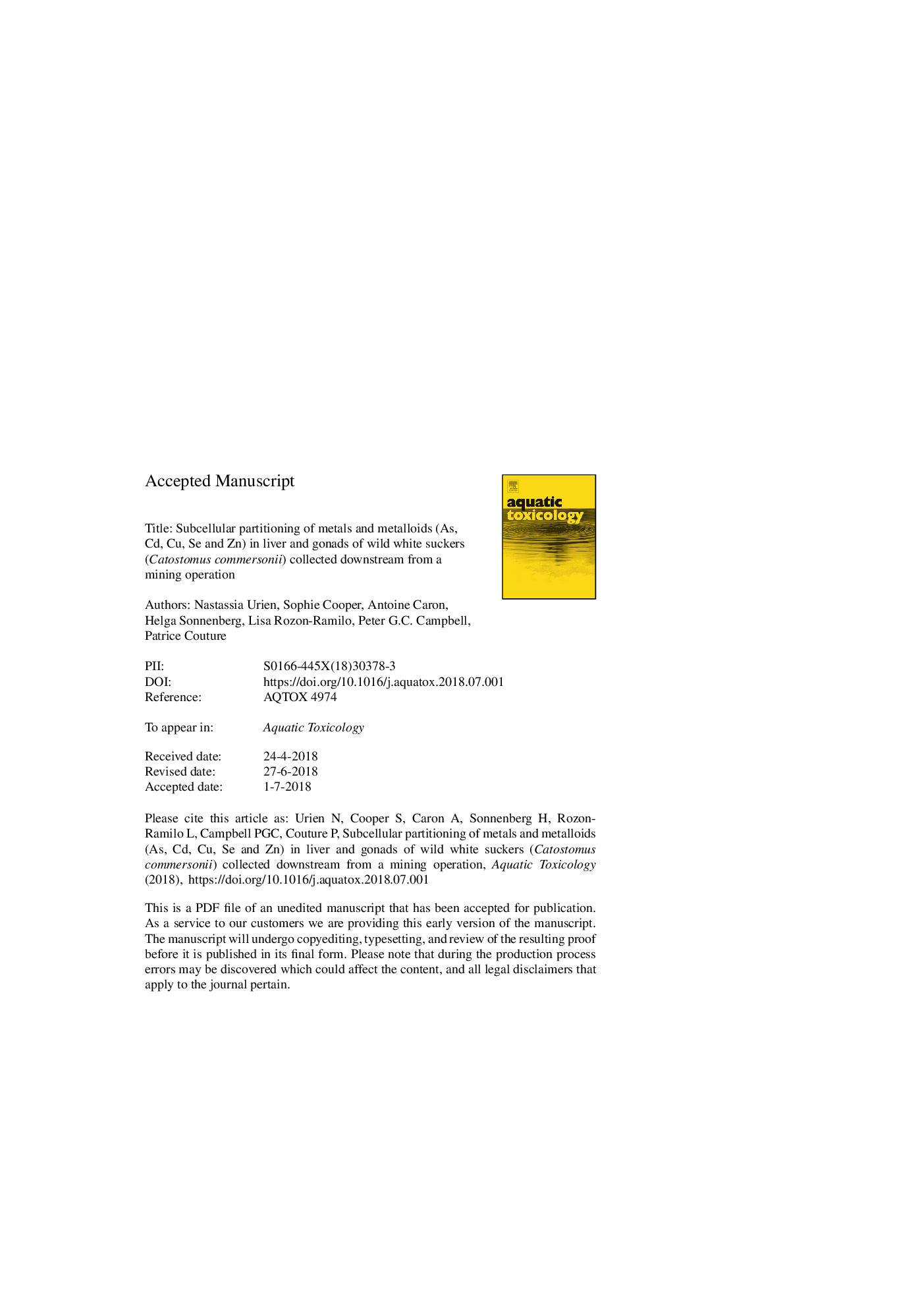| Article ID | Journal | Published Year | Pages | File Type |
|---|---|---|---|---|
| 8883646 | Aquatic Toxicology | 2018 | 39 Pages |
Abstract
In the present study, we examined the subcellular distribution of metals and metalloids (As, Cd, Cu, Se and Zn) in the liver and gonads of wild white suckers (Catostomus commersonii) collected downstream from a metal mining operation (exposure area) and in a reference area. Metal partitioning among potentially metal-sensitive fractions (heat-denatured proteins (HDP), mitochondria and microsomes) and potentially biologically detoxified fractions (heat-stable proteins (HSP) and metal-rich granules) within cells was determined after differential centrifugation, NaOH digestion and heat-denaturation steps. Metal-handling strategies between liver and gonads, and between sexes, were examined. Hepatic metal concentrations were significantly higher in exposed compared to reference fish, especially for Se (14x), Cd (5x) and Cu (3x), and did not vary between sexes. In contrast, gonadal Cd, Cu, Se and Zn concentrations were consistently lower in testes than in ovaries; marked differences in Cd and Se concentrations between exposed and reference fish were observed for both sexes. Overall, metal-handling strategies were similar in both liver (male and female pooled) and female gonads, but differed from those in male gonads, likely due to the different functions assigned to ovaries and testes. Subcellular partitioning of As, Cd and Cu showed that the HSP fraction was most responsive to increased metal exposure, presumably reflecting Cu regulation, and possibly Cd and As detoxification. Zinc concentrations were tightly controlled and mainly found in the HDP fraction. Interestingly, changes in Cd-handling strategy in female gonads were particularly evident, with Cd shifting dramatically from the metal-sensitive HDP fraction in reference fish to the metal-detoxified HSP fraction in exposed fish. It seems that Cd detoxification in female gonads was not fully induced in the less contaminated fish, but became more effective above a threshold Cd concentration of 0.05â¯nmol/g dry weight. Partitioning of Se was different, with the largest contributor to the total liver and gonad Se burdens being the putative metal-sensitive HDP fraction, suggesting that excess Se in this fraction in exposed fish may lead to Se-related stress. The present subcellular partitioning results demonstrate that metal handling strategies vary among metals, between organs and (in some cases) as a function of metal exposure. They also show promise in identifying metals of potential concern in a risk assessment context.
Related Topics
Life Sciences
Agricultural and Biological Sciences
Aquatic Science
Authors
Nastassia Urien, Sophie Cooper, Antoine Caron, Helga Sonnenberg, Lisa Rozon-Ramilo, Peter G.C. Campbell, Patrice Couture,
